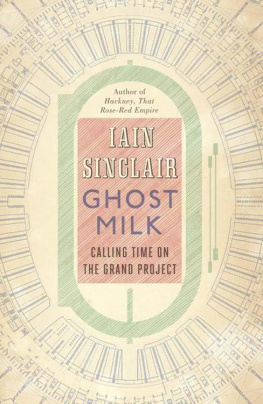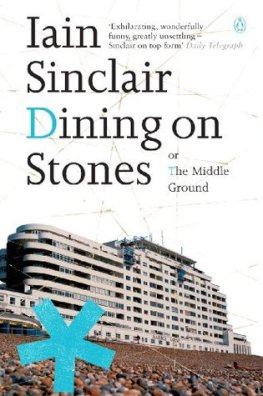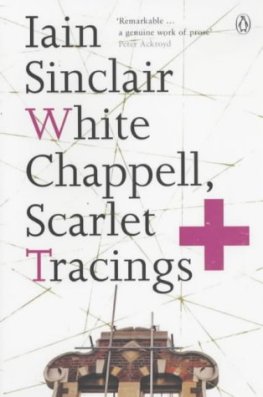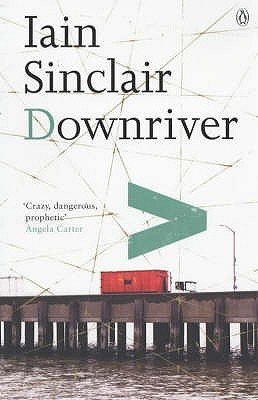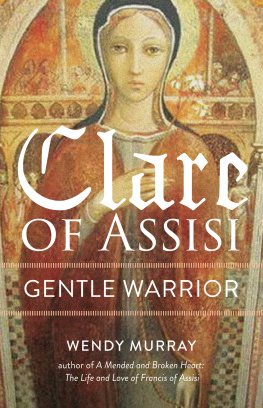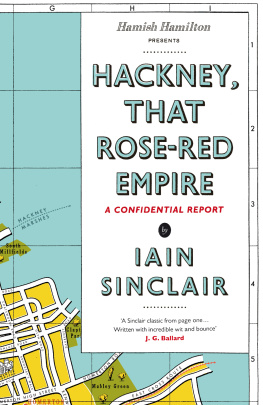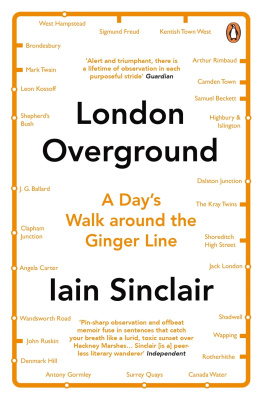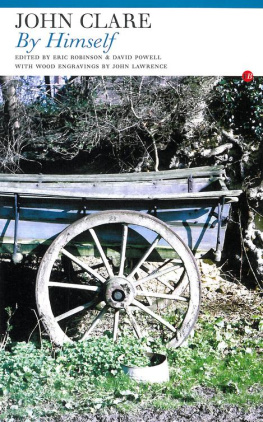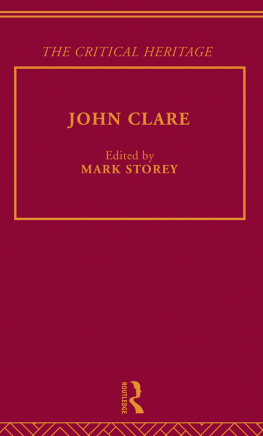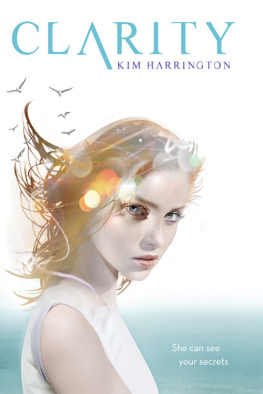PENGUIN BOOKS
EDGE OF THE ORISON
Iain Sinclair is the author of Downriver (winner of the James Tait Black Memorial Prize and the Encore Award); Landor's Tower; White Chappell, Scarlet Tracings; Lights Out for the Territory; Lud Heat; Rodinsky's Room (with Rachel Lichtenstein); Radon Daughters; London Orbital and Dining on Stones. He is also the editor of London: City of Disappearances. Iain Sinclair lives in Hackney, East London.

John Clare
Edge of the Orison
In the traces of John Clare's Journey out of Essex
IAIN SINCLAIR

PENGUIN BOOKS
PENGUIN BOOKS
Published by the Penguin Group
Penguin Books Ltd, 80 Strand, London WC2R 0RL , England
Penguin Group (USA) Inc., 375 Hudson, Street, New York, New York 10014, USA
Penguin Group (Canada), 90 Eglinton Avenue East, Suite 700, Toronto, Ontario, Canada M4P 2Y3 (a division of Pearson Penguin Canada Inc.)
Penguin Ireland, 25 St Stephen's Green, Dublin 2, Ireland (a division of Penguin Books Ltd)
Penguin Group (Australia), 250 Camberwell Road, Camberwell, Victoria 3124, Australia (a division of Pearson Australia Group Pty Ltd)
Penguin Books India Pvt Ltd, 11 Community Centre, Panchsheel Park, New Delhi 110 017, India
Penguin Group (NZ), 67 Apollo Drive, Mairangi Bay, Auckland 1310, New Zealand (a division of Pearson New Zealand Ltd)
Penguin Books (South Africa) (Pty) Ltd, 24 Sturdee Avenue, Rosebank, Johannesburg 2196, South Africa
Penguin Books Ltd, Registered Offices: 80 Strand, London WC2R 0RL England
www.penguin.com
First published by Hamish Hamilton 2005
Published in Penguin Books 2006
I
Copyright Iain Sinclair, 2005
All rights reserved
The moral right of the author has been asserted
Except in the United States of America, this book is sold subject to the condition that it shall not, by way of trade or otherwise, be lent, re-sold, hired out, or otherwise circulated without the publisher's prior consent in any form of binding or cover other than that in which it is published and without a similar condition including this condition being imposed on the subsequent purchaser
ISBN: 978-0-14-191101-4
To Anna
I had imagind that the worlds end was at the edge of the orison & that a days journey was able to find it so I went on with my heart full of hopes pleasures & discoverys expecting when I got to the brink of the world that I could look down like looking into a large pit & see into is secrets the same as I belivd I could see heaven by looking into the water.
John Clare
Contents
Journeys out of Essex: John Clare (1841) his pursuers (2000)
FLYING
The bulk of mankind is as well qualified for flying as thinking.
Jonathan Swift
Eighty Miles Out
It is a sleeping country, unpeopled and overlit. The sky cloudless. Horizon soft as milk in a contact lens. We wade, knuckling irritated eyes, through golden cereal fields, missing the familiar sound of the road. This is the conclusion, so we hope, of a walk from Epping Forest to Glinton (once of Northamptonshire, then Huntingdon, now Peterborough). Fifteen or so miles, a literal last leg, after three days shadowing the A1, the Great North Road, dawn to dusk and beyond: in the traces of the mad poet John Clare. Mad to be out of it, mad to chivvy the story along to a predestined conclusion, the reunion with his phantom wife, burnt Mary. Mad to shrug off the poultice of identity, to be everyone. Borderless as an inland sea.
You might think a circuit of London, twelve walks, inside and outside the orbital motorway, the M25, would have cured me of this neurosis: the compulsion to be on the hoof, burdened with packs, sketchbooks, cameras. Future memories. There was unfinished business. The gravity of London had to be escaped by a final, unwritten chapter, a shaky attempt to place my boots in John Clare's hobbled footsteps (foot foundered and broken down by the time he reached Stilton). The pain of Clare's journey ameliorated by the ecstasy of this achieved thing, a letter, never sent, to a dead woman. Mary Joyce of Glinton. Reluctant muse. Mother of invisible children.
I have written an account of my journey or rather escape from Essex for your amusement & hope it may divert your leisure hours I would have told you before now that I got here to Northborough last friday night but not being able to see you or to hear where you was I soon began to feel homeless at home & shall bye & bye feel nearly hopeless but not so lonely as I did in Essex for here I can see Glinton church & feeling that Mary is safe if not happy & I am gratified though my home is no home to me my hopes are not entirely hopeless while even the memory of Mary lives so near me God bless you My dear Mary Give my love to your dear beautifull family & to your Mother
Renchi Bicknell, my companion on the orbital walks, a painter coming back to his practice after years running a bookshop in a small Hampshire town, had moved further west, to try a bed-and-breakfast place (fine view over the Somerset levels) in Glastonbury. His morning circuits, every day the same route, skirted the Tor, until this landscape, from which so many anxious seekers had squeezed the last drop of meaning, lost its novelty and became a part of him. He walked with his wife, plotting other excursions, the Clare hike, a heightened sense of vision. And then, motorway dust shaken off, an expedition with his son to Nepal.
Who you walk with alters what you see: the view, the prospect. With Renchi, circumnavigating London, rivers, concrete bridges over streams of blind traffic, we were conscious, above everything else, of doing a job: logging evidence, disturbing secure buildings, churches, bunkers, labouring at a narrative that was being shaped by our progress (the lack of it). Renchi's motorway paintings were obliged to perform as diaries, topographical records of simultaneity, like those pre-Giotto lives of Italian saints, where everything happens at once: temptation, triumph, torture, death. Resurrection. The soul, a golden kite, lifted into heaven by a flock of doves.
London's fringes, motorway edge lands, were infected by nightmares in asylums and hospitals, by the pressure of our nervous attention, worrying at the fabric, promoting a thesis: the M25 is more than a road, a misconceived one hundred and twenty miles of tarmac, uncivil engineering. It means. Our walk made something happen, happen to us. Nothing changed out there, in the drift of the motorists and their suspended lives; in my conceit, we were transformed. On a molecular level. Very gradually, and with considerable reluctance (on their part), forgotten ancestors acknowledged our feeble interventions. We re-lived their histories and remade our own. The noise of the motorway changed from nuisance to a chorus of oracular whispers, prompts, mangled information. Which we had volunteered to transcribe and interpret.
Walking with my wife, with Anna, the accident of our forty-year association having passed in an imploding instant of work, children, meals, holidays, bills, urgent inessentials and accidental epiphanies, was different. Very different. We started on the South Coast, the wind at our backs, a stroll to the pier; then the fishing huts, up the steps to the country park. A steady pace, no problems on the flat. But no detours, no church towers, those were Anna's conditions: no museums, book pits, interrogations of eccentrics met along the way.
Next page

